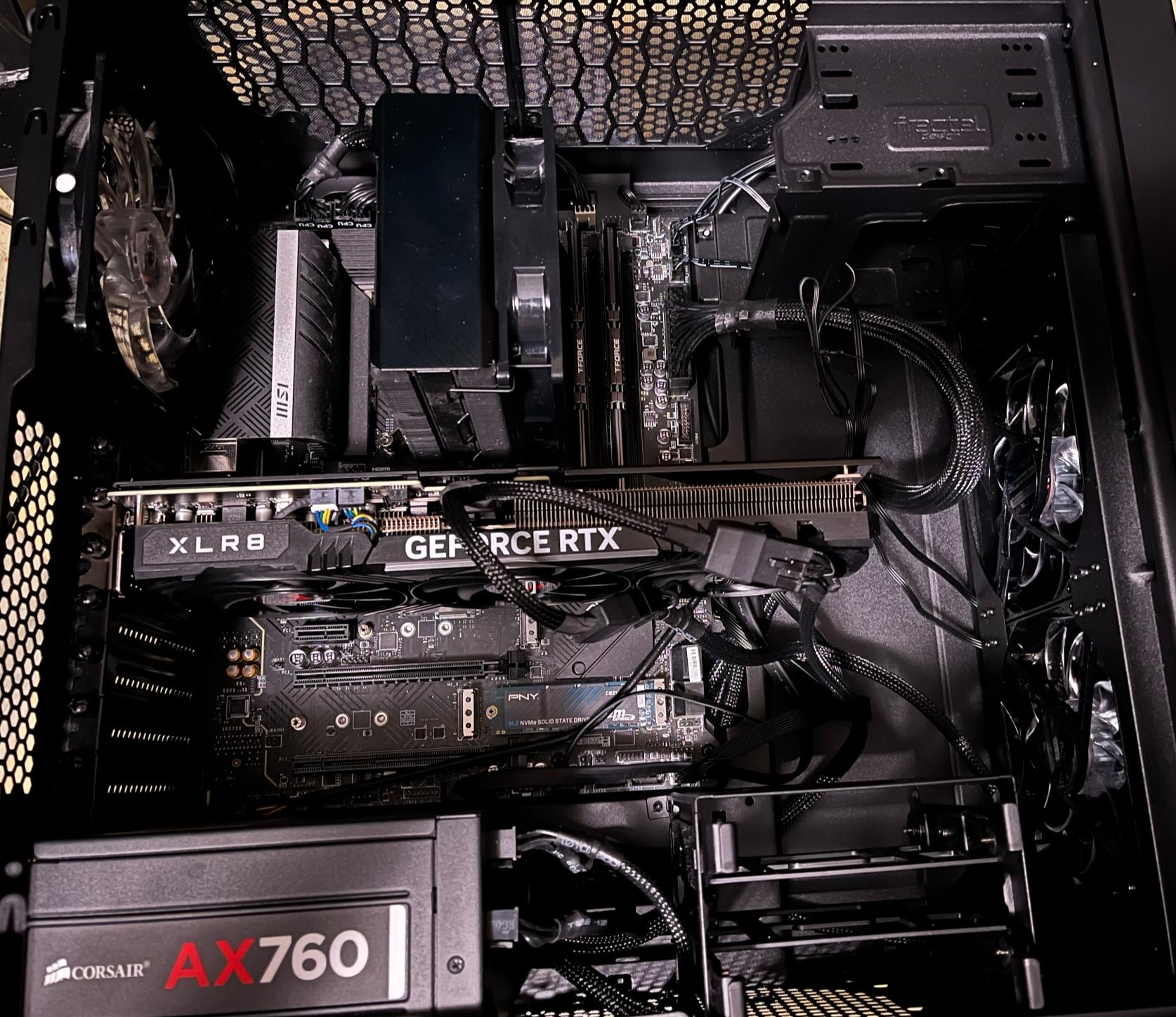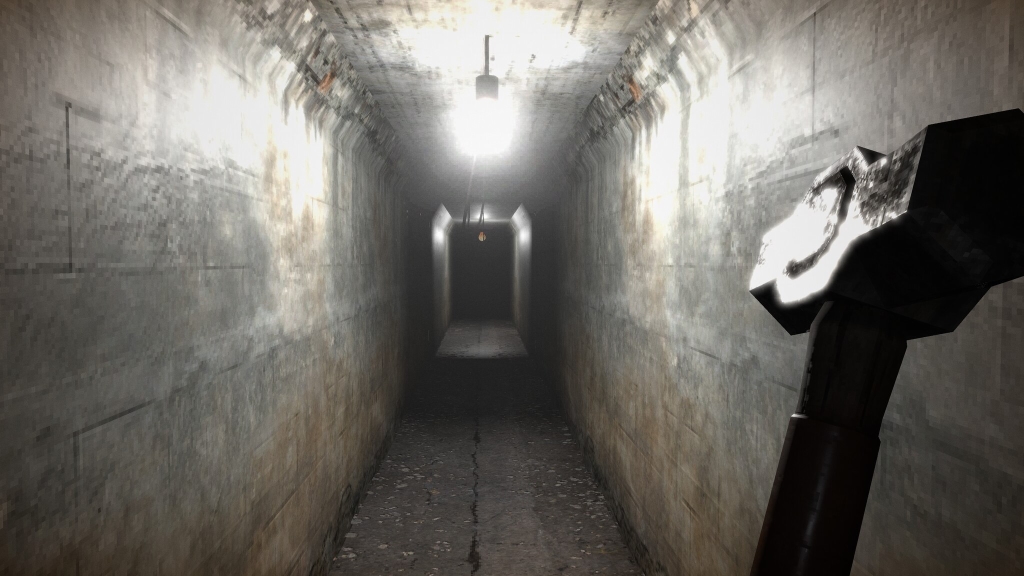Lost in Vivo Review
The 22nd of December, 2024
Lost In Vivo Review
Lost in Vivo is a scary game! I was extremely interested in this game because it’s made by the great Kira, who made Lunacid! Which was one of my favorite games recently, as I’m sure you all know, so, I had to check out what they were working on before Lunacid, and I came across this little gem!
Let’s start with some unimportant stuff you don’t care about!
This is my first game on my new PC! This month I got a nice 12th gen Intel i5 PC from a friend and slotted a 4070 Super into it! The graphics card totally rips! It runs everything at very high settings, and I’m quite happy with how it performs! Lost in Vivo, of course, ran in 4k. No one is asking for pictures, but I’ll have to throw one in here! Have a look!

Now that I’m done talking about myself, the part you came for!
If you enjoyed Lunacid, you’ll find a lot of that same DNA here in Lost in Vivo, even though it’s obviously a very different kind of game. Kira uses their classic PS1-esque graphical style here in Lost in Vivo, and that same kind of lo-fi horror aesthetic is present. The OST has some similarities as well, being worked on by the same talent. I’ll refrain from comparing the two games too frequently for your sake, however, dear reader…
So, what is Lost in Vivo?
Lost in Vivo is a game where you are put in the shoes of someone with extreme claustrophobia. Your service dog is sucked away into a storm drain, and you have to dive in regardless of your fears to save your furry friend in need. It is a first-person horror game, with gun combat! A lot of the gameplay is exploring spooky places and fending off monsters as you progress deeper and deeper into the depths. Are any of the things that happen even real, or just horrible hallucinations of a claustrophobic mind stuck in a storm drain trying to save their dog? The game lets the player decide that for themselves.

The Gameplay of Lost in Vivo
Very shortly after starting up the game, you’ll be thrust into the darker world in search of your beloved dog; you’ll explore sewers, train tunnels, mines, and darker things that defy description. The bulk of your game time will be exploring these places, trying to find resources or some path forward. I think this is enriching because the environments are very interesting with bits of lore scattered about the game world for you to read in small chunks as you go. The game has gun combat that is pretty good; you’ll never be able to shoot wantonly and waste countless rounds for fun, but if you play smart with the ammo, you’ll never run out either. There’s melee combat as well to fall back on, but I never ran out of ammo during my play-through. There are also a few puzzles that are pretty fun and not overly obtuse like games in this genre tend to be. One thing I really disliked about the gameplay, however, is the lockpicking mechanic. There are locked doors that you can unlock with a lockpicking set throughout the game. Usually the lockpicking sets are near the door, so it’s not much trouble, but there are many ways it can become a problem if you miss one set or miss a door. There is no backtracking in Lost in Vivo. Once you leave a level, you can’t go back; because of this and the lockpicking mechanic, there are a few places throughout the game where you can softlock your save file and have to restart or cheat to progress. I think the lockpicking mechanic would be fine with backtracking, but without it, it’s a bit broken. Lost in Vivo has a few different endings that, unfortunately, require you to replay the entire game from the beginning to get since there is no backtracking.
Let’s talk about the soundtrack and the audio!
Thankfully, Jarren Crist and Kira worked together on the OST to this game just like they did for Lunacid; the OST offers some pretty Lunacid-style songs, but it’s mostly used for horror effect since this game is supposed to be scary, after all! Of the pretty songs that stand out: I’d absolutely check out the save room theme! The bulk of this game’s soundtrack is not pretty songs; however, it’s horrifying stuff, and it’s pretty good at that! The songs during the combat segments invoke a sense of dread very well. Kira is quite good at this when it comes to music. The droning horror music mixes with the sound design as well, so I should also mention that.
I’m sure my readers have played Silent Hill since they are so cultured and well-read (or played, in this case… what do you call someone who has played all the good games… I have no clue…) If you are familiar with Silent Hill, you’ll know it uses its sound effects to great effect in defining its horror atmosphere and eliciting the sense of dread and stress in the player; the first Silent Hill does this by making a radio static sound when enemies are near and gets louder as monsters approach; Lost In Vivo does something very similar to this. In Lost In Vivo, when monsters are present in the same room as the player, a noisy drone will play and get louder and louder as they get closer. The music mixes with this droning to make the encounters more stressful and scary. The game doesn’t use jump scares when it comes to encounters. It doesn’t really mind if you know where the bad guys are; it just wants to make those encounters horrifying, and this sound design decision is Kira doubling down on that.
I promise I’ll stop talking about the sound design soon, but I must say one more thing. This game uses positional audio really well! You will notice this very early on. The first real bit of gameplay has you down in a sewer, looking for your dog and using his barking to guide you down the right path. This entire segment is made possible with positional audio. The game uses it in other places as well; for example, early in the game, you come across a door that is locked, and no matter how you try to pick the lock, it won’t budge; as you turn around in defeat to walk away, you’ll hear the lock fall to the floor behind you. You turn around, and the door is open!
The Horror of Lost in Vivo
The game’s main theme is claustrophobia. All of the game takes place in narrow and tight spaces, little places you have to crawl down into to progress. If you find that kind of thing frightening, this game will be absolutely horrifying for you. It doesn’t really have any jump scares, though; it creates its horror by consistently putting the player in oppressive atmospheres. Tight passageways with low ceilings where danger could be around any corner. The game is not cruel, though; some respite is offered to the player by letting them hear the barking of their service dog in the distance and the gentle music of the save rooms. Another respite is offered in the secret Light Mode; if you go into the options on the main menu and set the brightness all the way to max and then start a new game, it’ll load you into a dev room that shows every monster in the game in full lighting. This could possibly be good enough to get those who can’t stomach most horror games to play this one, I think!
Lunacid!
“Wait, I thought you said you’d not talk anymore about Lunacid?” I have to because I have to talk about Midnight Mode! “What’s Midnight Mode?” I’m glad you asked, dear reader! If you start up Lost in Vivo at midnight or shortly after, you’ll get a kind of Proto-Lunacid mini game you can play. It’s clear a lot of the ideas for Lunacid were in place even this many years before its release because of how similar this mode is to the actual game. In Midnight Mode you are in a castle slaying enemies and wandering around in Lunacid fashion. The jailer guys from Lunacid even make an appearance here in this mode 5 years before the release on Lunacid! Super cool..
“Should I confront my fears?”
“Should I play Lost in Vivo?”
I reply out of the darkness with a resounding...
“Yes”
At the time of writing, Lost in Vivo is currently on sale.
It can be found here